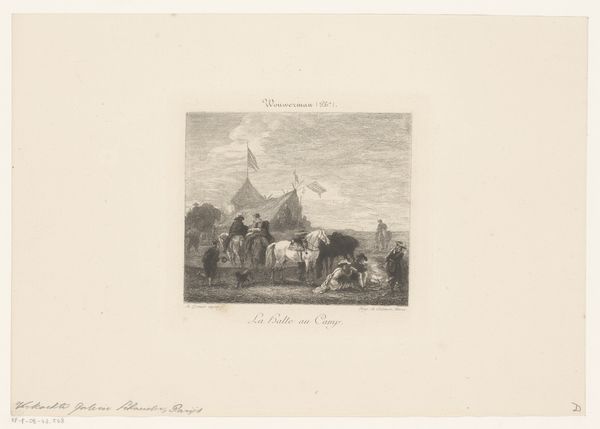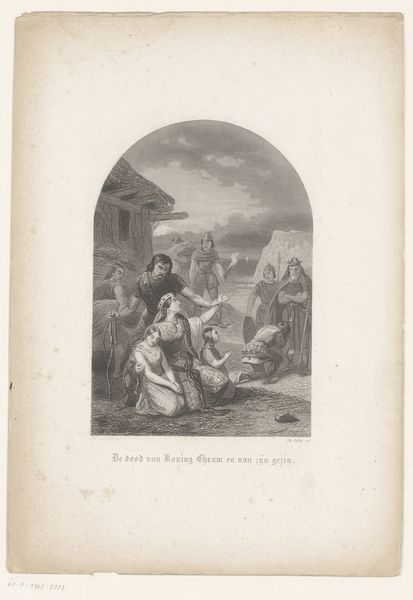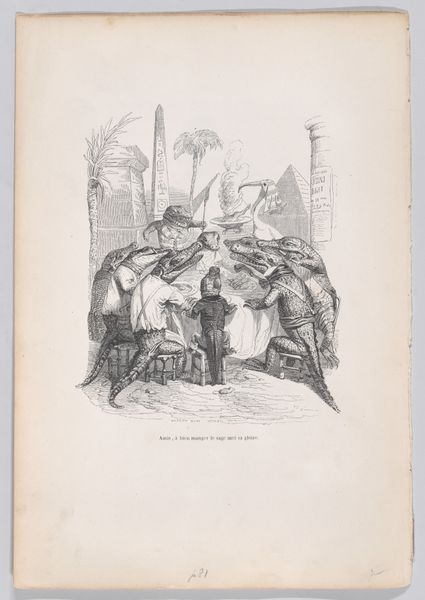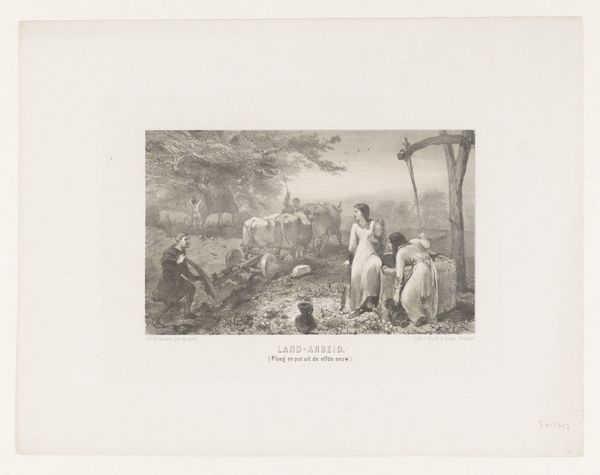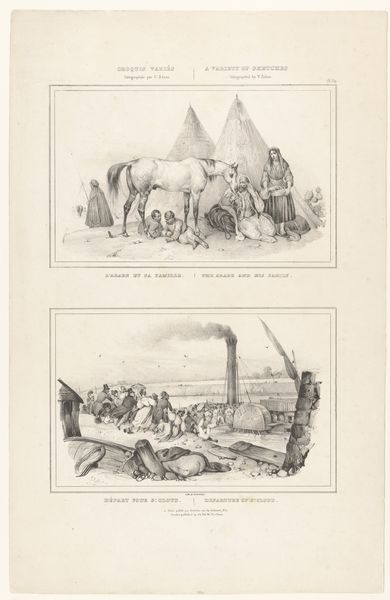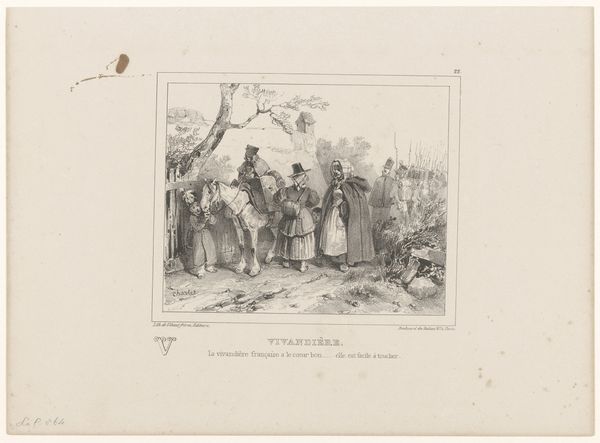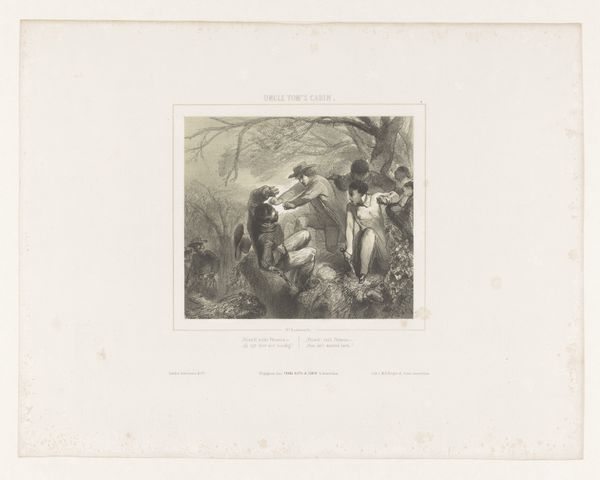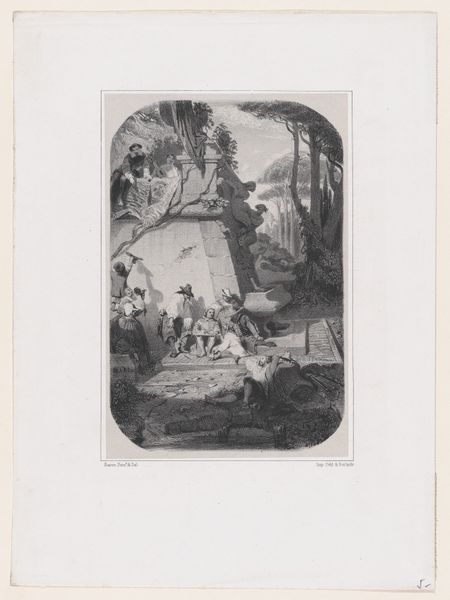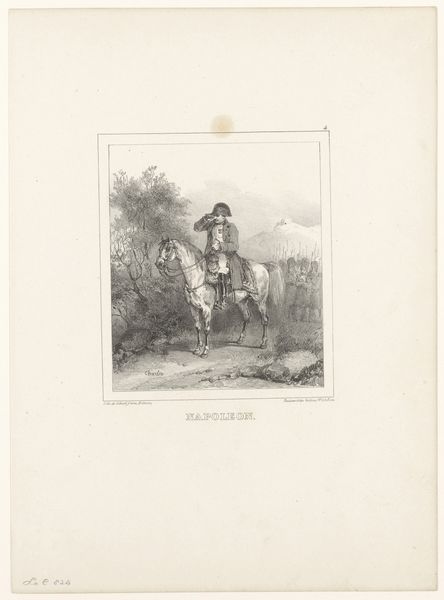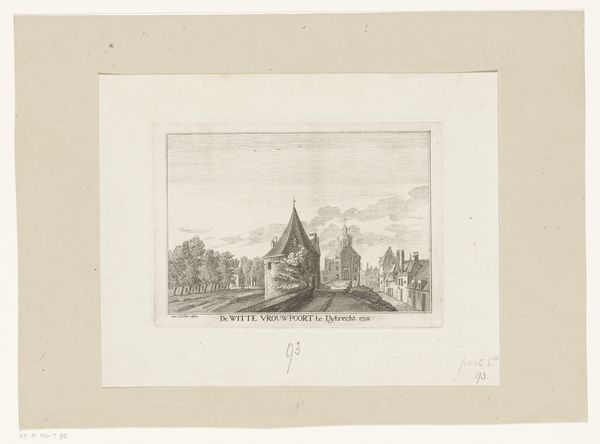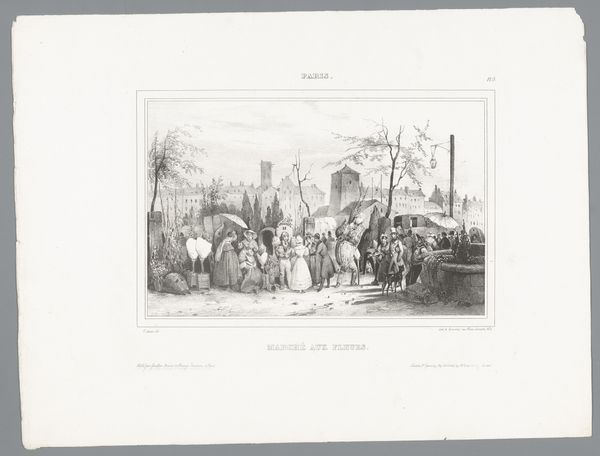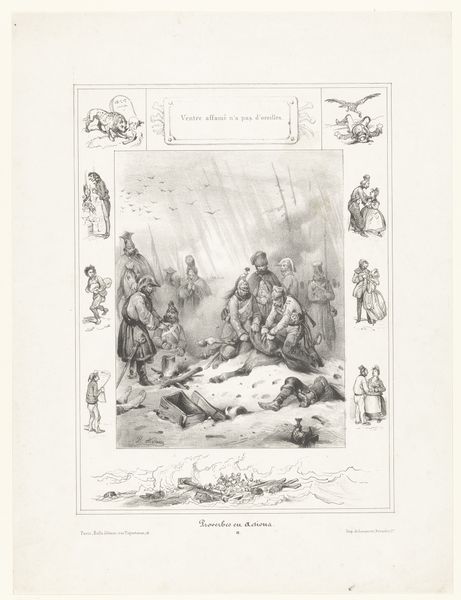
Dimensions: height 238 mm, width 167 mm
Copyright: Rijks Museum: Open Domain
Curator: Looking at this print titled "De Geest van Van Speyk," which roughly translates to "The Spirit of Van Speyk," created anonymously between 1827 and 1927, I'm struck by its rather stoic portrayal of military readiness. It’s printed on paper using an engraving technique and resides here at the Rijksmuseum. What is your first impression? Editor: An air of restrained chaos, wouldn't you agree? It’s monochromatic, almost austere, yet full of visual energy. I see symbols of power juxtaposed against the fragile, almost wistful weeping willow in the background. Curator: It does manage to capture that early 19th-century European anxiety following the Napoleonic wars. This piece is quite fascinating when viewed through the lens of Dutch nationalism in that era. Van Speyk himself became a national hero—a symbol of unwavering Dutch pride. Editor: Indeed! He's mythologized here. Notice how he is centrally positioned with the flag of the Netherlands—a classic heroic posture that ties him directly to the iconography of Dutch identity. It is like he represents the embodiment of sacrifice and bravery, echoing sentiments of defending one's homeland. Curator: Precisely! The engraving presents Van Speyk as the emblem of ultimate sacrifice. It’s potent visual propaganda designed to stir patriotic feelings. Think about the socio-political implications of an anonymous artist reinforcing such a national narrative. Editor: It’s very effective, too. I can sense that tension, even generations removed. The cannons and the military formation clearly represent strength. However, is the artist implying that strength comes with the mournful acceptance of inevitable loss indicated by the willow? Is that melancholy an admission about the real cost of freedom? Curator: Possibly! The placement is key here. I am more prone to see this anonymous engraving in the context of history paintings in order to reinforce political goals of a modern state still seeking to solidify itself within Europe. It’s designed to galvanize support for the Dutch crown and solidify a sense of national unity, a cultural tool used after a long period of Napoleonic disruptions. Editor: Ultimately, both of us can glean profound ideas from it. It reminds us that symbols have incredible endurance; we project meanings, fears, and desires on to them that echo long past the original moment of creation. Curator: A stirring testament to the lasting impact of art within political memory. It demonstrates the public role art plays in weaving history.
Comments
No comments
Be the first to comment and join the conversation on the ultimate creative platform.

